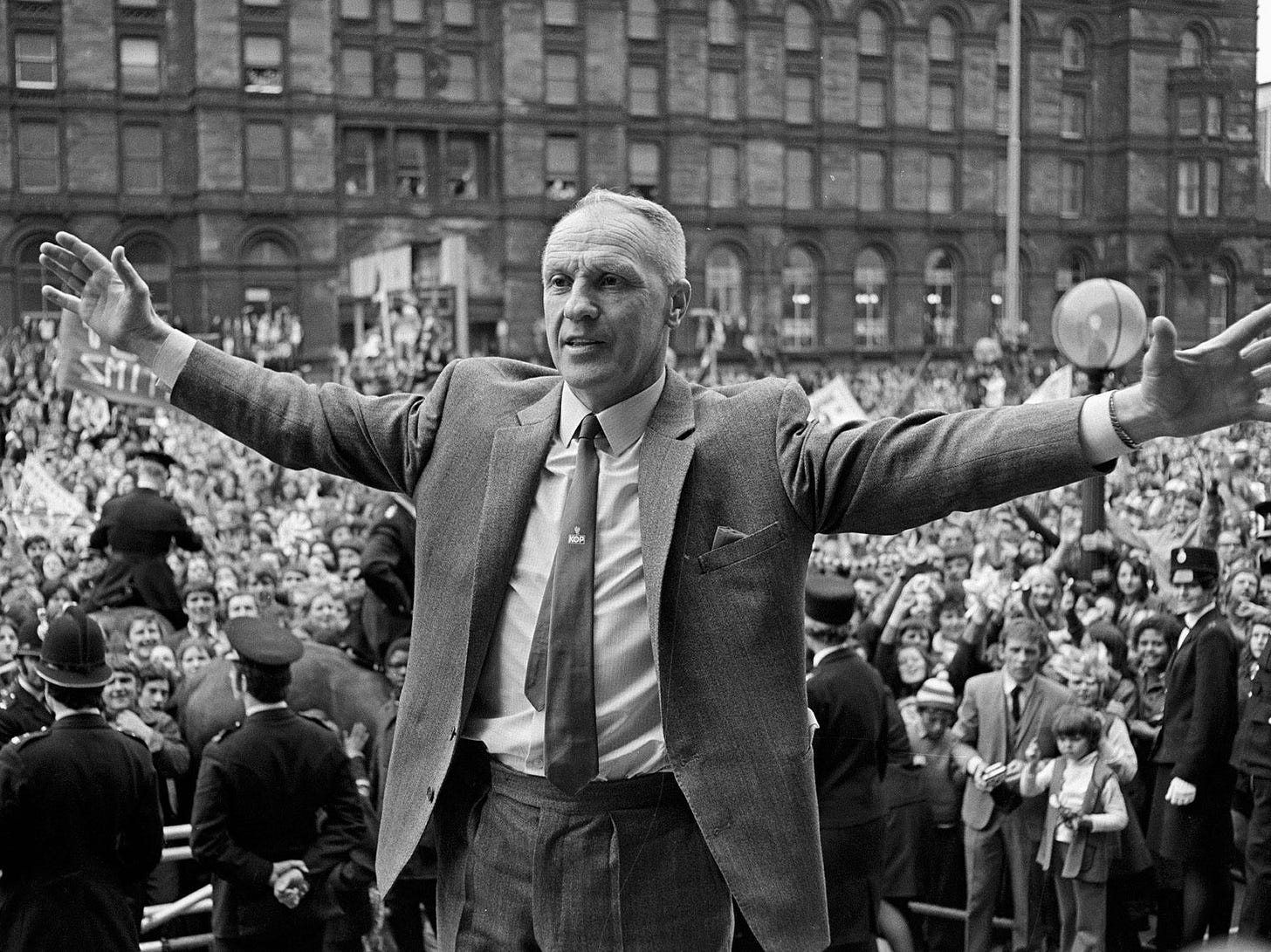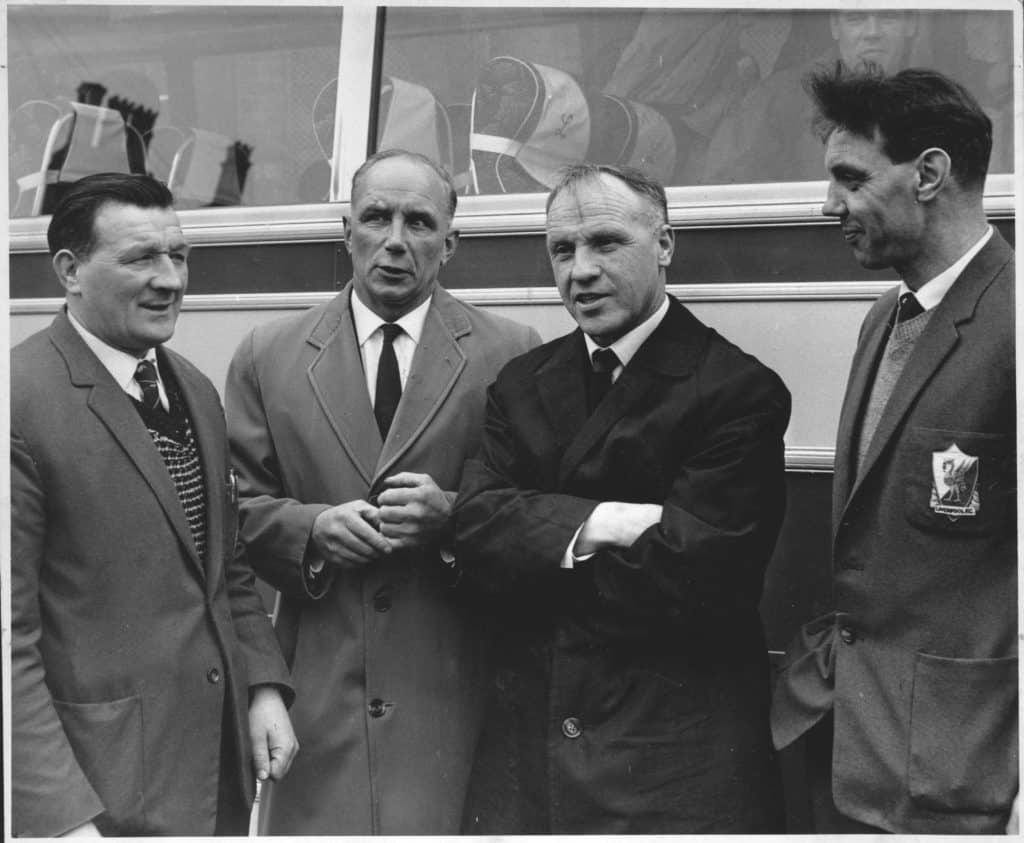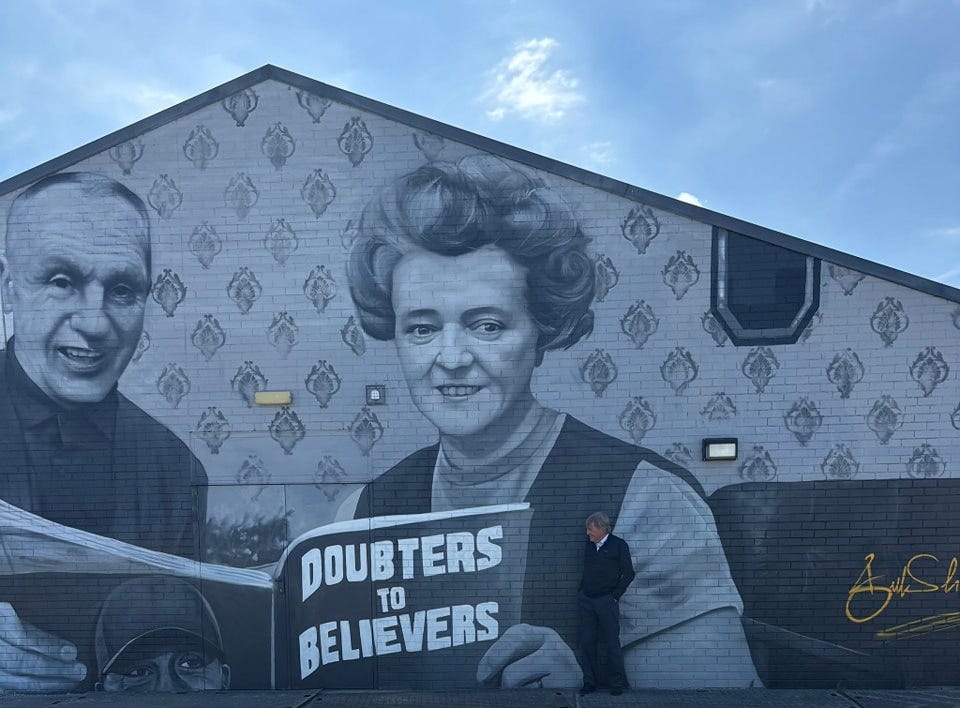Bill Shankly: The Man Who Built the Soul of Liverpool FC
To understand Liverpool Football Club, you need to understand Bill Shankly.
Not just the manager, not just the man who dragged Liverpool from the Second Division into the elite, but the man who made us believe.
I was only four when Shankly passed away in 1981. I never saw him in a dugout or heard him command the Anfield air with one of his sharp, unforgettable turns of phrase. But like every Red, I’ve felt his presence in every corner of the club. He isn’t just a historical figure. He’s a voice in the walls. A shadow behind the badge.
Whenever I speak to Kenny Dalglish about the Liverpool FC culture, it returns to Shankly. He’ll talk about standards, unity, responsibility, all values that trace directly back to the man from Glenbuck in Ayrshire. And when Kenny unveiled the mural of Shankly and Nessie last month, it felt like more than a tribute. It felt like a reminder of where this club came from, and of the man who pointed it toward greatness.
More Than a Manager, More Than a Club
Shankly inherited a club on its knees when he took over at Liverpool in December 1959. Liverpool were in the Second Division, the stadium was crumbling, and the training ground was worse. But Shankly didn’t just see a team. He saw potential. And more importantly, he saw a purpose.
“My idea,” he said, “was to build Liverpool up and up into a bastion of invincibility until eventually everyone would have to submit and give in.”
He didn’t want Liverpool to be successful. He wanted Liverpool to be untouchable. And he would stop at nothing to get them there.
His changes were immediate. He dug up the training ground and demanded proper facilities. He walked the pitch himself, measuring its length by footstep. He didn’t ask for respect; he built it brick by brick. This wasn’t just a clean-up—it was a full-scale cultural overhaul.
And at the heart of it was the now legendary Boot Room. It began as a storage space and became the brain trust of a dynasty. Bob Paisley, Joe Fagan, and Reuben Bennett were not assistants; they were Shankly’s trusted inner circle. They would sit for hours discussing football, analysing tactics, and planning how Liverpool could stay ahead. That room became the club's beating heart, long after Shankly had moved on.
Words That Still Matter
Shankly’s football mind was brilliant. But it was his voice that made him immortal. He had that rare gift of making football sound like gospel. He didn’t talk in jargon or clichés. He spoke like a man who had lived it, who understood people.
Some of his most famous lines still echo today, not just for humour, but for truth.
“Pressure is not the European Cup. Pressure is working down the pit. Pressure is having no work at all. That’s the reward.”
He connected football to real life, not to elevate the game, but to ground it. He never lost sight of what the club meant to the people. He made sure the players felt it too. “Fire in your belly,” he said, “comes from pride and passion in wearing the red shirt. We don’t need to motivate players because the status of playing for Liverpool keeps them motivated.”
That standard is still the bar. The idea is that wearing the shirt is a privilege, not a job. That’s Shankly’s voice in our heads, even now.
And of course, there’s the quote that still gets printed on scarves, murals and headlines every year:
“Some people think football is a matter of life and death. I assure you, it’s much more important than that.”
Tongue in cheek, yes. But not entirely. He meant it.
From Glenbuck to Glory
To understand Shankly, you have to understand where he came from. Glenbuck was a tiny mining village in Ayrshire, Scotland, a place that no longer exists on the map, but produced more than 50 professional footballers in its time. It was football or the pit, nothing in between.
Shankly’s values were shaped in that environment: hard work, loyalty, and sacrifice. He spoke of the “freedom of expression” football gave him and how it saved him from the life his brothers endured in the mines. He believed in team play, in playing for the badge, and in giving absolutely everything.
His journey through the lower leagues of English football, with Carlisle, Preston North End, and a war-disrupted career, added to that hunger. By the time he joined Liverpool, he was not there to hope. He was there to build.
Turning Belief Into Silverware
Within five years of arriving, Shankly had guided Liverpool out of the Second Division. He convinced giants like Ron Yeats and Ian St John to join a team that technically didn’t belong in their class. But Shankly saw the future. He sold them not based on what Liverpool was, but on what Liverpool would be.
Once in the First Division, success followed quickly. Liverpool won the league in 1964, again in 1966, then again in 1973. The FA Cup was finally claimed in 1965. The UEFA Cup arrived in ‘73 too. But it wasn’t just about winning. It was about how they won. With style, with steel, with relentless drive.
Shankly didn’t chase big names. He believed in development. Ray Clemence, Kevin Keegan, Emlyn Hughes, Tommy Smith; they were young, raw, and often overlooked. But under Shankly, they became world-beaters. He saw what others missed.
Even as the trophies piled up, his most incredible legacy was something more profound, a sense of belonging. Liverpool became a club you didn’t just support, but belonged to. Shankly made that happen.
The Retirement That Shook the Kop
In 1974, after lifting his second FA Cup, Shankly stepped down. It was a shock. Even now, people say it came too soon. But in his eyes, it was time. “Forty-two years in football had gone by in the blink of an eye,” he said. “I wanted to spend more time with my wife.”
Nessie had stood by him through everything. She was the quiet strength behind the legend. That new mural of them both, unveiled by Dalglish, was a beautiful reminder that behind every great man is often an even greater woman.
Shankly thought he might stay around the club. But the board moved on. Bob Paisley stepped in, and a respectful but painful distance opened up. He still showed up at Melwood. Players still called him boss. But he wasn’t in charge anymore, and that hurt.
Still, he never stopped being Shankly. He travelled to watch games in the lower leagues. He offered advice. He walked the streets of Liverpool like he always had. One story tells of a fan spotting him, offering him a seat in the pub, and pulling out an Everton membership card. “Don’t let anyone see that,” Shankly smiled. “That’s not even fit for the fire.”
Legacy That Time Can’t Touch
Shankly passed away in 1981, just four months after Liverpool had won their third European Cup. The timing was cruel, but the mourning was instant. Anfield was filled with flowers, scarves, and tears.
He had taken a forgotten club and turned it into a powerhouse. He had instilled standards that still guide us today. He had made us believe we were different, not because we won, but because of how we went about it.
And we still do.
Every great Liverpool side that has followed – Paisley’s all-conquering eleven, Dalglish’s entertainers, Houllier’s revivalists, Rafa’s European tacticians, Klopp’s mentality monsters, all carry echoes of Shankly. In work ethic. In humility. In the refusal to compromise on what football should look and feel like.
You don’t need to quote him to feel him. He’s in the flag that says “We are Liverpool.” He’s expecting every player to leave everything on the pitch. He’s in the humility of our greatest icons and the defiance of our songs.
A Personal Connection, A Lasting Message
For someone like me, who only knows Shankly through stories, the power of his message is staggering. Speaking to Kenny about him brings that home: the reverence, the respect, and the responsibility to carry it forward.
That mural of Shankly and Nessie isn’t just street art. It’s a vow. This club will never forget where it came from; we will never allow ambition to eclipse our identity. That greatness will always be built on togetherness, graft, and belief.
Bill Shankly didn’t just build a football team. He built a family. He built an identity. And he built it so well, we still live in its foundations.




